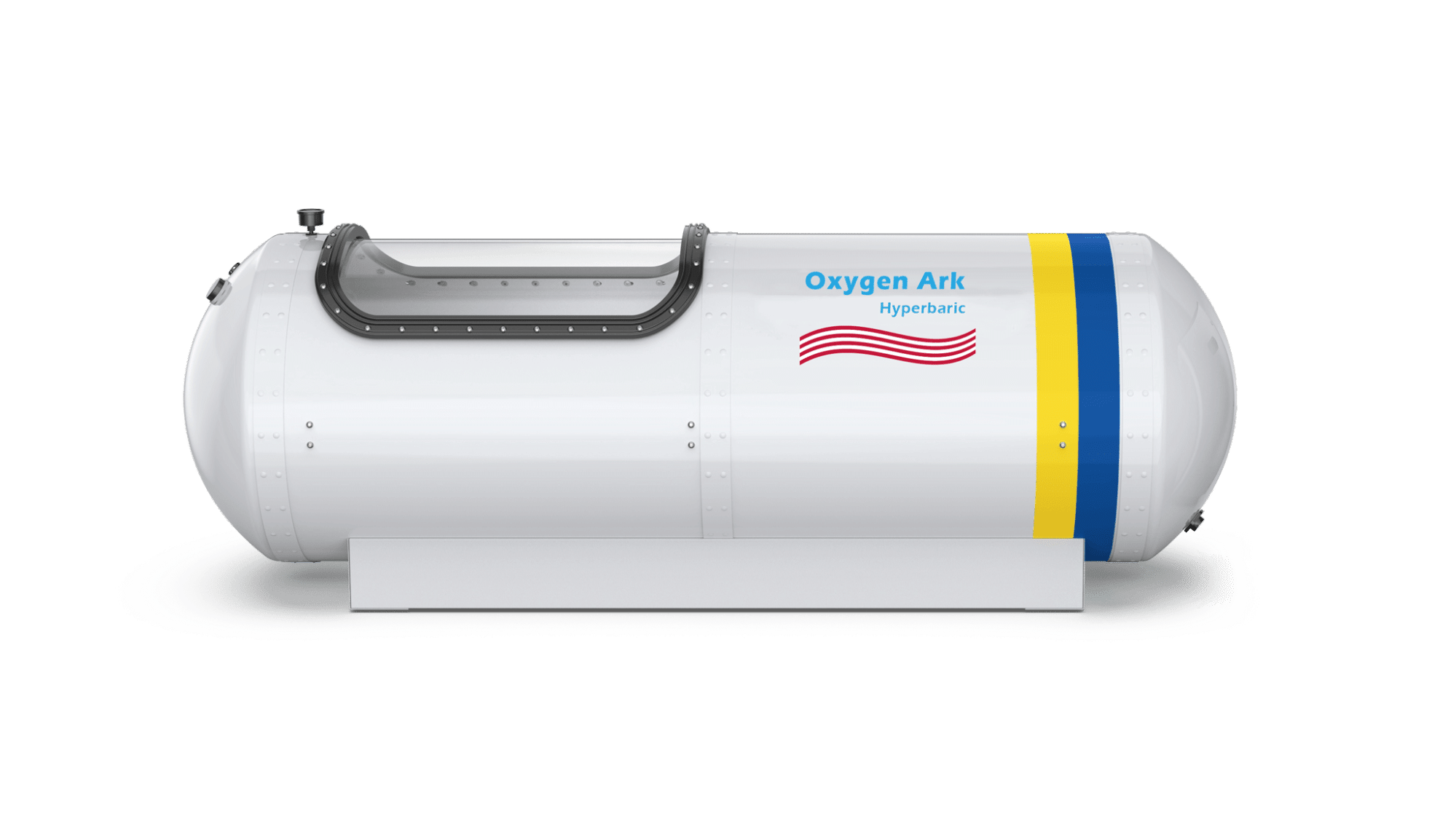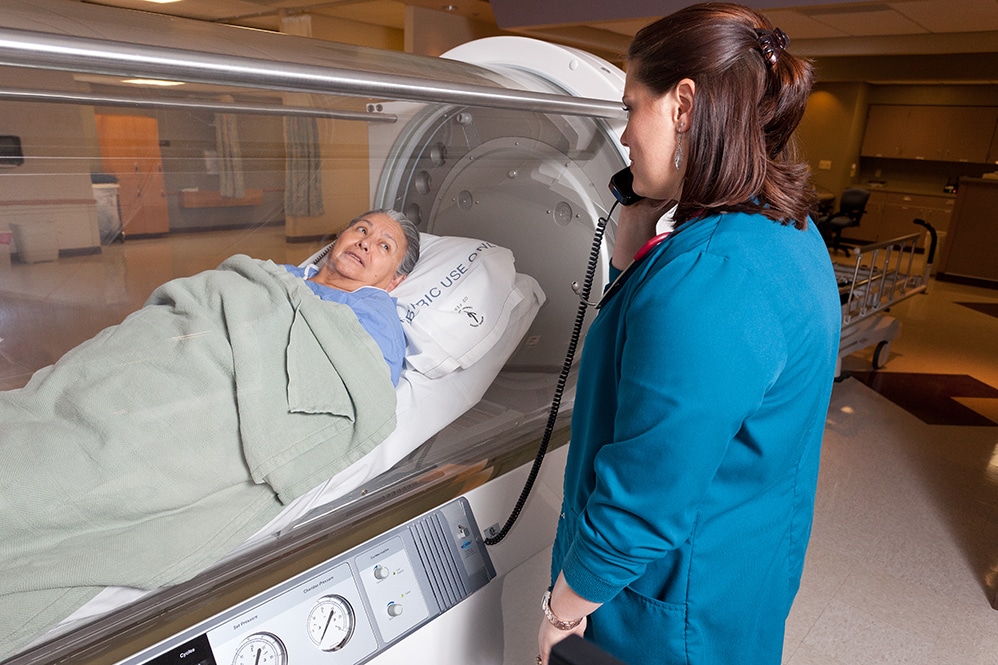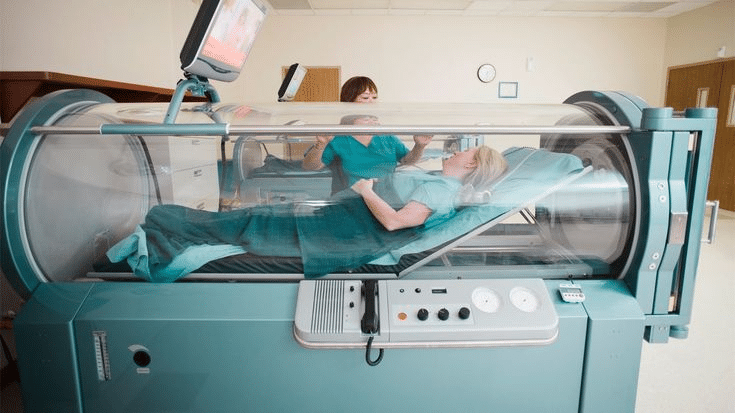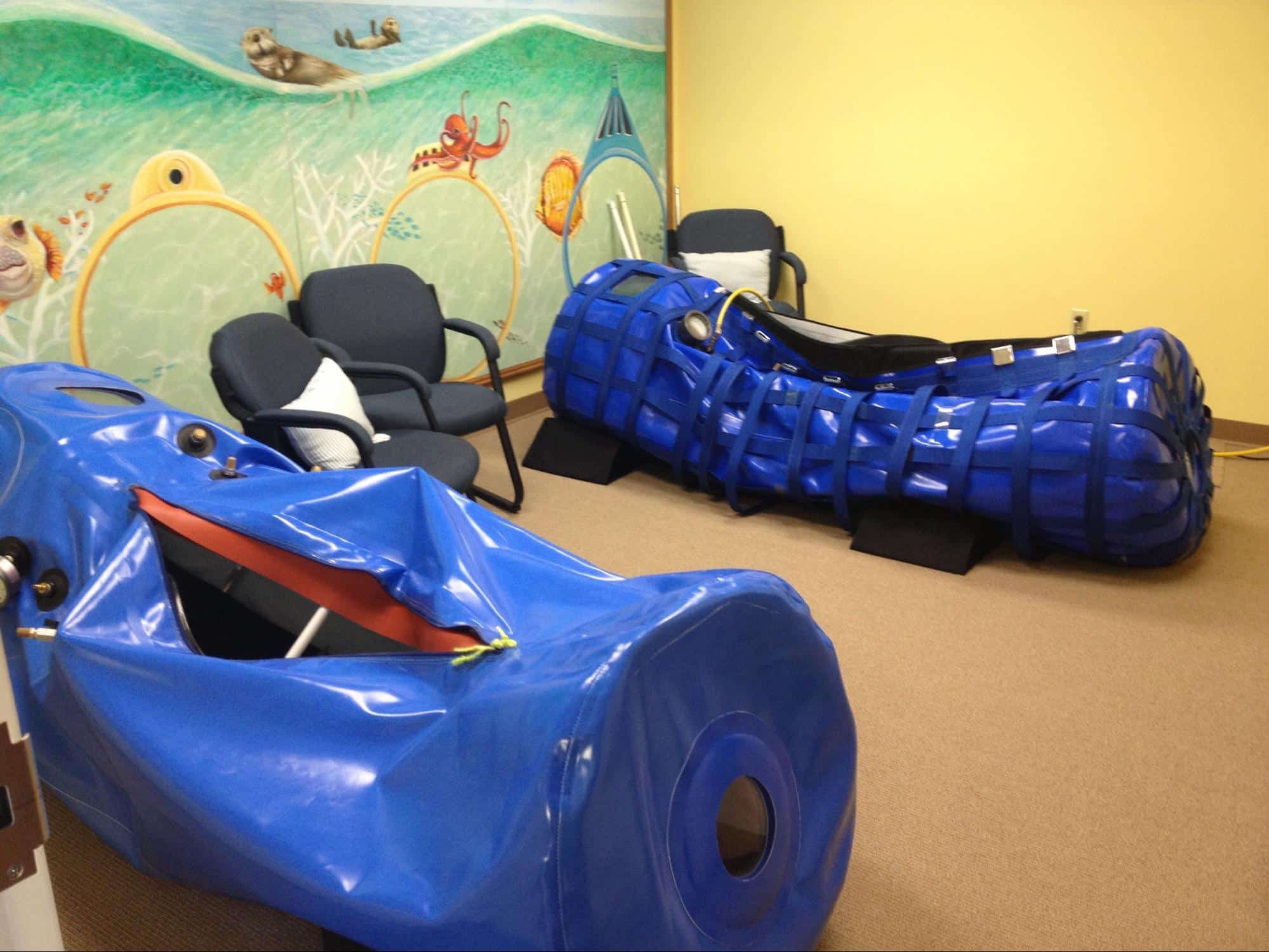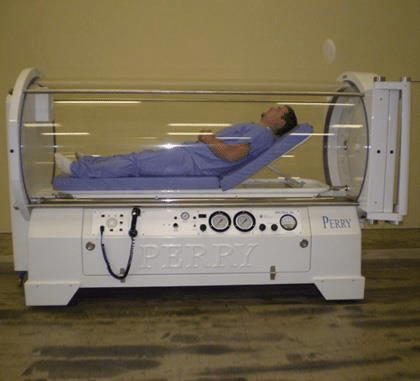
Source: Pinterest
Specialized enclosures called hyperbaric chambers enable people to breathe oxygen-rich air at greater atmospheric pressures. These chambers are generally employed in medical and therapeutic settings to treat a range of ailments, such as carbon monoxide poisoning, decompression sickness, and non-healing wounds.
This essay will go into the realm of hyperbaric chambers and examine the many varieties that are available. We may obtain insights into the various designs’ functions and applications by comprehending how they work together. Monoplace chambers, multiplace chambers, and portable chambers all have special qualities that make them effective for administering hyperbaric oxygen treatment.
Let’s take a look.
1. Monoplace Hyperbaric Chambers
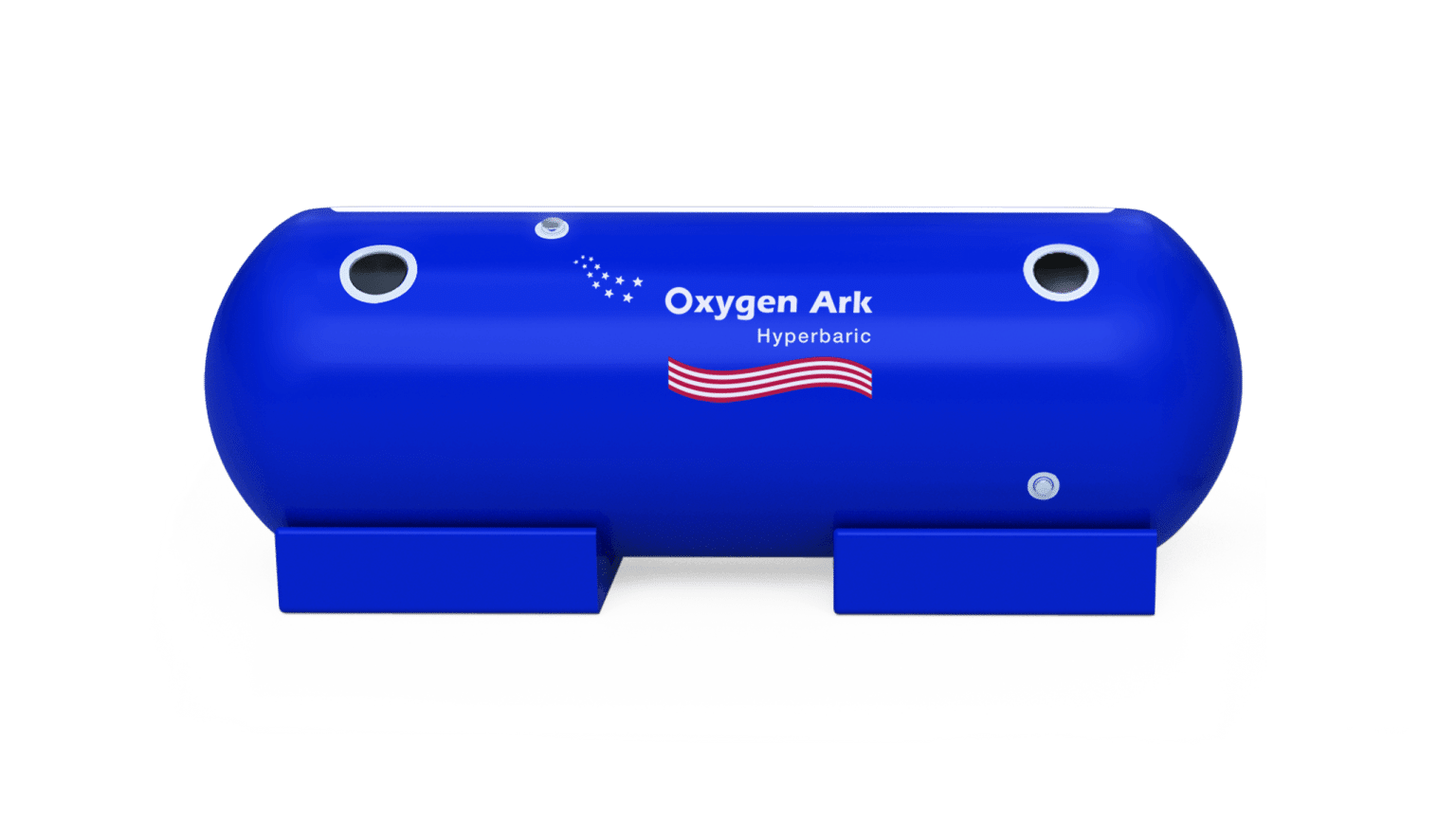
Source: OxygenArk
Monoplace hyperbaric chambers are a particular kind of hyperbaric chamber made to fit just one person. The majority of these chambers have a cylindrical form and are constructed of strong materials like steel or acrylic. The patient occupies a spot inside the pressure chamber on a cushioned bed or recliner while the chamber is tightly sealed.
One of the important characteristics of monoplace chambers is their use of 100% oxygen for pressurization, which enables the patient to receive larger quantities of oxygen. Medical professionals can keep an eye on the patient’s condition while receiving treatment thanks to the chamber’s transparent windows or glass panels.
Pros
- There is only room for one patient, the care may be customized and adapted to the demands of the patient.
- The pressured atmosphere speeds up healing by boosting blood oxygen levels, encouraging tissue regeneration, and lowering inflammation.
- Monoplace chambers are simpler to run and require minimal staffing.
Cons
- Because of the chamber’s size, some patients may find it uncomfortable to move around during treatment.
- For those who are claustrophobic, the chamber could make them feel trapped.
- Compared to multiplace chambers, its single-patient capacity results in a decreased treatment throughput.
Applications
Applications for monoplace chambers may be found in a number of medical disorders, including air or gas embolism, radiation damage, wound healing, and radiation poisoning. They are also utilized in some cosmetic operations to improve appearance and in sports medicine to heal sports-related ailments.
2. Multiplace Hyperbaric Chambers
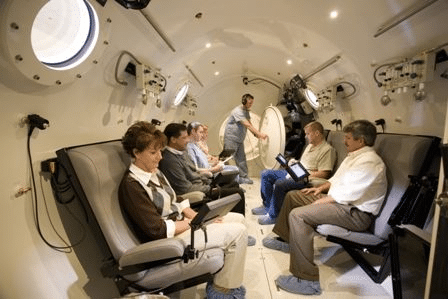
Source: Pinterest
Multiplace hyperbaric chambers are one kind of hyperbaric chamber that can hold numerous people at once. Multiplace chambers, as opposed to monoplace chambers, are big enough to fit medical staff who assist and care for the patients while they are being treated. These spaces are typically rectangular in design and made of sturdy materials like steel.
The capacity to distribute compressed air or a combination of oxygen and compressed air instead of pure oxygen is one of the distinctive qualities of multiplace chambers. As a result, it can be used to treat patients who might not tolerate 100% oxygen or who need certain gas combinations for their diseases. The chamber has viewing apertures or windows that allow medical personnel to watch and interact with the patients.
Pros
- They provide more room than monoplace chambers, allowing for improved patient comfort and movement during treatment.
- If necessary, urgent medical assistance is made possible by the presence of medical staff within the chamber.
- The bigger chamber size also enables the use of medical equipment for patient treatment and the performance of operations like surgery.
Cons
- Multiple patients in the chamber necessitate coordination and oversight of various treatment methods.
- The greatest pressure that can be reached could be constrained if compressed air is used instead of pure oxygen.
- Multiplace chambers may be more expensive to run due to their intricate design and upkeep needs.
Application
Numerous medical disorders, such as decompression sickness, gas gangrene, severe infections, and non-healing wounds, might benefit from the use of multiplace chambers. They are also applied in research settings to examine how different physiological processes and diseases are affected by hyperbaric oxygen treatment.
3. Portable Hyperbaric Chambers
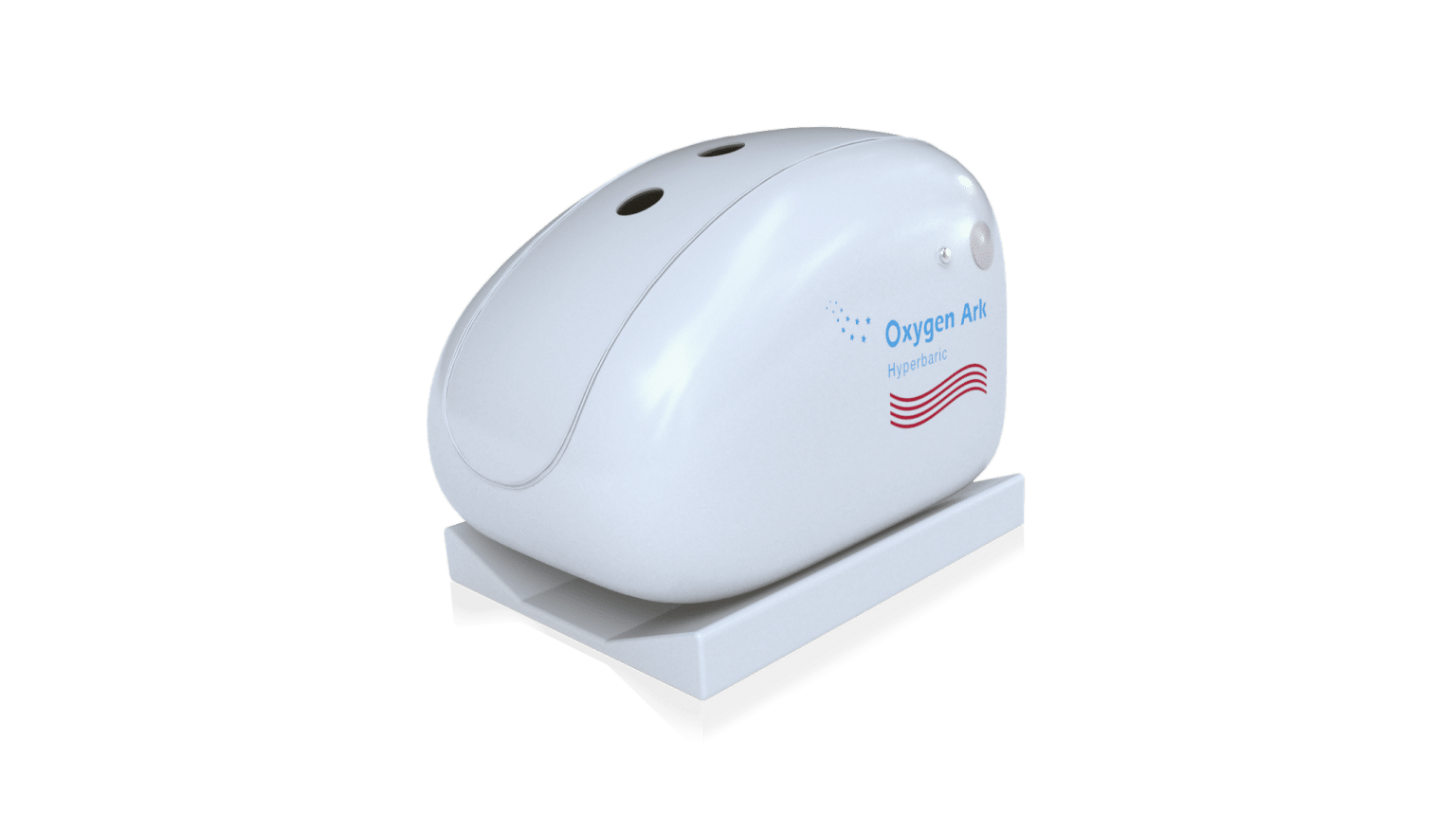
Source: OxygenArk
Compact and lightweight portable hyperbaric chambers are easy to carry and set up in various settings. These chambers are made to accommodate one patient and deliver hyperbaric oxygen therapy outside of conventional healthcare settings. They frequently include airtight zippers or seals to sustain pressure, and they make use of sturdy materials like nylon or PVC.
Portable hyperbaric chambers are practical for use in remote regions or for treatments at home because of their design, which makes them simple to assemble and disassemble. To allow the patient to view outside the room while receiving therapy, they frequently have clear windows or panels. Only pure oxygen or compressed air can be used to pressurize portable chambers.
Pros
- Accessibility and flexibility
- Hyperbaric oxygen treatment can be administered to patients in the comfort of their own homes or in settings that are more convenient for them.
- Comparing portable chambers to bigger, stationary hyperbaric chambers, financial reductions are also possible.
- Individuals or healthcare professionals may rent or buy them for their own or mobile usage.
Cons
- They might not fit medical staff inside the chamber during treatment because of their diminutive size.
- The variety of conditions that can be treated efficiently may be constrained by the maximum pressure that can be reached in portable chambers as opposed to bigger chambers.
- Patients must be able to adhere to instructions and safety measures for using portable chambers properly.
Application
Applications for portable hyperbaric chambers include treating chronic wounds, respiratory problems, neurological illnesses, and improving sports performance. For those looking for hyperbaric oxygen treatment outside of clinical settings, they offer a practical and accessible solution.
4. Veterinary Hyperbaric Chambers
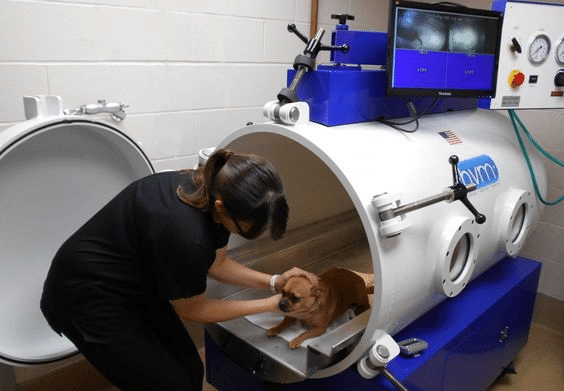
Source: Pinterest
Animals can get hyperbaric oxygen therapy in customized cages known as veterinary hyperbaric chambers. Small pets to enormous cattle may all fit in these chambers, which are designed to hold a variety of creatures of different shapes and sizes. They are intended to offer a secure and regulated pressure atmosphere and are made of sturdy materials like stainless steel or acrylic.
Animal-friendly entrances and exits, movable stretchers or tables for situating the animals comfortably, and clear viewing ports for checking on their status are all characteristics and design components of veterinary hyperbaric chambers. To maintain the animals’ welfare throughout treatments, the chambers could additionally have devices to regulate the temperature and humidity.
Pros
- The ability of veterinary hyperbaric chambers to aid in the healing and rehabilitation of animals is one of its many noteworthy benefits.
- In a variety of veterinary illnesses, hyperbaric oxygen treatment can speed up recovery by improving tissue oxygenation, reducing inflammation, and stimulating tissue repair.
- These chambers offer an animal-friendly non-invasive therapy alternative.
Cons
- When put in a new setting, such as a hyperbaric chamber, animals may get stressed or anxious. To guarantee their safety and cooperation throughout the procedure, certain animals might need to be sedated or given an anesthetic.
- Only specialist veterinary institutions or clinics may have access to hyperbaric chambers for animals.
Applications
Applications for veterinary hyperbaric chambers include post-surgical recuperation, wound healing, burns, neurological illnesses, carbon monoxide poisoning, and near-drowning accidents in aquatic animals, among many other veterinary ailments. They provide a beneficial therapeutic alternative for vets looking for cutting-edge therapy approaches to enhance the overall well-being of animals.
5. Hyperbaric Chambers for Research
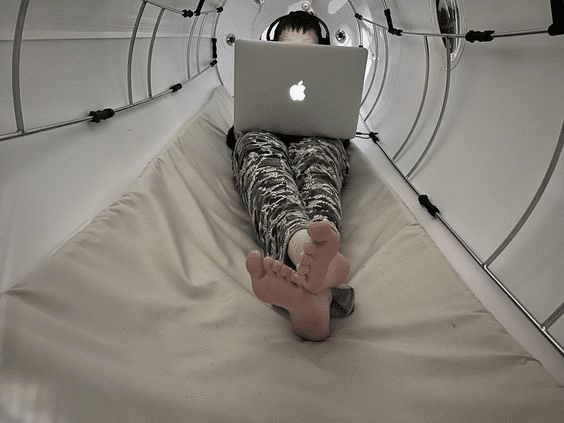
Source: Pinterest
Research Hyperbaric chambers are particular enclosures used in academic and experimental settings to examine how different biological processes are affected by increased air pressure and oxygen concentrations. Researchers may regulate the pressure and oxygen levels in these chambers to create controlled conditions in which to study particular phenomena.
Depending on the particular needs of the experiment, different hyperbaric chambers have different characteristics and design components. They are often made of materials like stainless steel or acrylic and feature airtight sealing. They might have monitoring devices that take readings of variables including pressure, oxygen content, temperature, and humidity. Additionally, windows or ports may be present in certain rooms for observation and data collection.
Pros
- The capacity of hyperbaric chambers to mimic certain pressure and oxygen levels in order to examine their impact on organisms or biological systems is one of its main research benefits. The physiological, biochemical, and molecular reactions of living things to hyperbaric environments may be studied through the manipulation of factors.
- These chambers offer carefully monitored experimental environments that may be duplicated and tailored to the research’s requirements.
Cons
- It can be expensive to purchase and maintain hyperbaric chambers for research.
- To function properly, they could need particular training and knowledge.
- Further validation and testing may also be necessary for the transfer of research chamber findings to practical applications.
Applications
Many scientific fields benefit from the use of hyperbaric chambers including physiology, neurology, wound healing, tissue engineering, dive medicine etc. They investigate the effects of hyperbaric conditions on cell function, tissue regeneration and oxygen transport, and the effects of hyperbaric oxygen on therapy on a range of diseases and illnesses s do We learned more about hyper-multibody physiology and its potential medical applications in the clean from these buildings.
Conclusion
Finally, selecting the most appropriate hyperbaric chamber for a given need requires a thorough understanding of the many types available. Choosing the right chamber provides the best results and maximizes the effectiveness of hyperbaric oxygen therapy, whether for medical, veterinary, research, or other specialty applications

